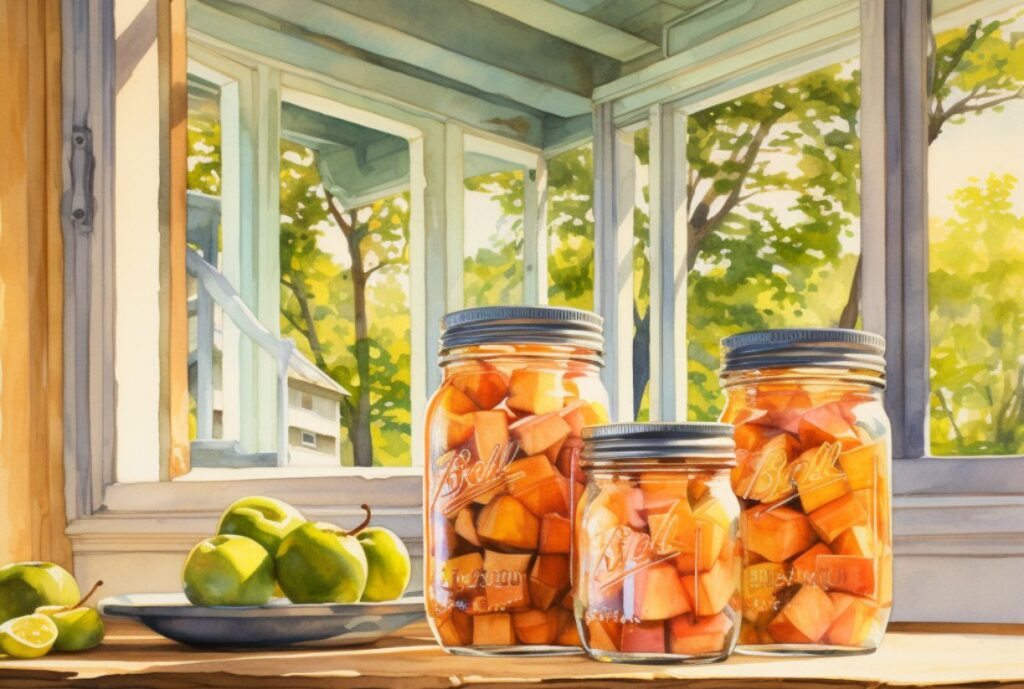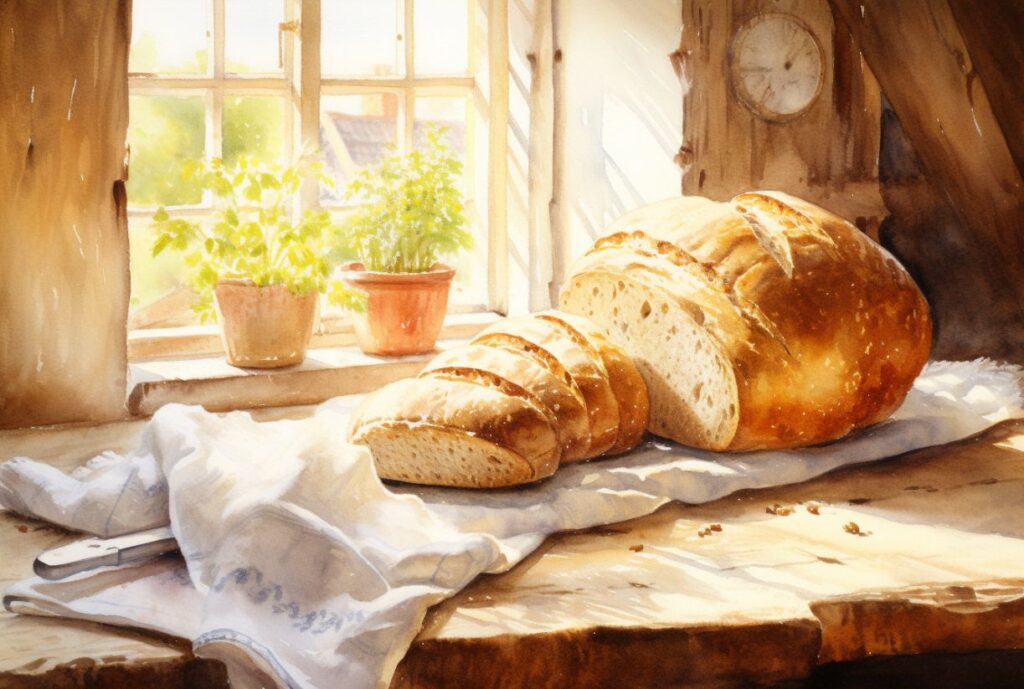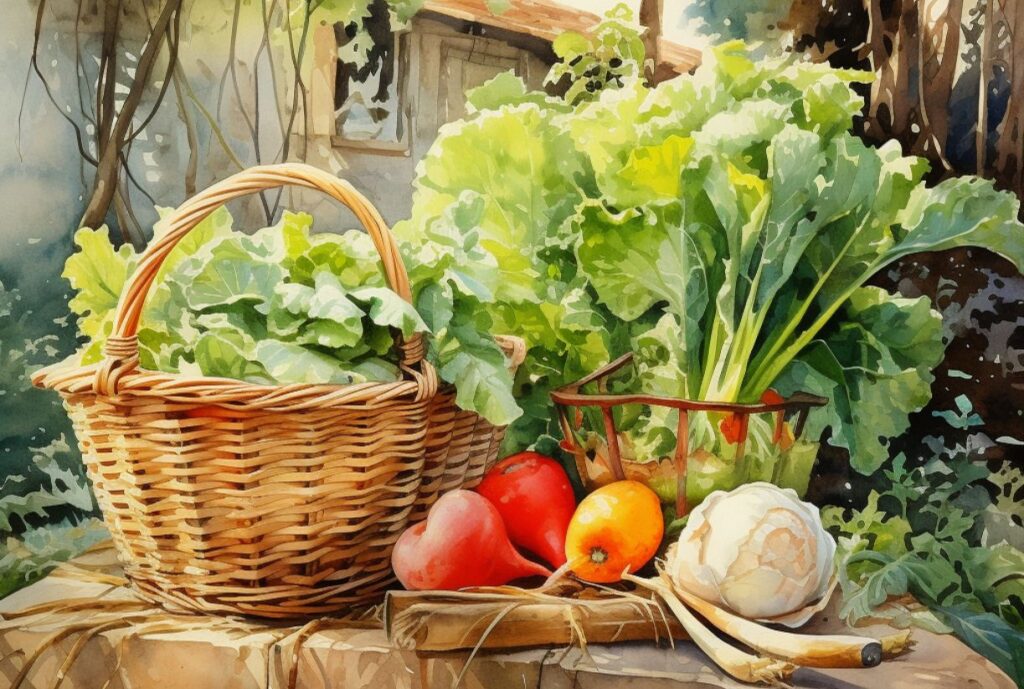Starting a homesteading lifestyle can be an exciting and fulfilling adventure that leads to being more self-sufficient, resilient, and connected with nature.
If you’re excited about living a more fulfilling life, but feeling confused or overwhelmed about how to get started, don’t worry! The most important thing is just to start learning and practising homesteading skills that work best for your current situation.
Whether you have acres of land or a small backyard, there are always ways to cultivate these essential skills.

It’s important to remember that every homesteader started somewhere, and each skill you learn brings you closer to a more sustainable and rewarding way of living.
You can start with basic skills such as composting, gardening, or raising chickens for fresh eggs. If you have a larger area, you can consider more advanced skills such as beekeeping, raising livestock, or even building a greenhouse.
Homesteading is a way of life that requires patience, hard work, and dedication. But with time, the rewards can be immeasurable. Not only will you save money on groceries and utility bills, but you’ll also be contributing to a more sustainable future for yourself, your family and the planet.
So, if you’re ready to take the first step, start by learning one skill at a time, and before you know it, you’ll be on your way to becoming a successful homesteader.
As an Amazon Associate, I earn from qualifying purchases. Read my full disclosure here.
Here are 30 homesteading skills that anyone can start doing today:
1. Learn to cook from scratch
If you want to learn some essential skills, cooking from scratch would be the best place to start. If you have your basic cooking and baking skills down, then you can totally learn how to cook from scratch.
This will be different for everyone, depending on how you eat. If you rely on convenience items, why not make your own at home? Some from scratch things I make are bone broth, biscuits, cookies, dinner rolls, and soup.

2. Grow food
Gardening is the cornerstone of homesteading. It’s about growing your food, understanding the soil, and working with the seasons.
Start small with a vegetable patch or container gardening if you are short on space. Learn about companion planting, natural pest control, and composting. Growing fruits and vegetables is an extremely rewarding experience that improves with time. It brings a lot of joy and satisfaction to be able to harvest fresh produce from your garden.
From onions to lettuce to pumpkins, there are many wonderful things to plant and grow.
3. Preserving and canning to savour the harvest
When you start growing food, you will probably have more fresh produce than you can eat. That’s when it’s helpful to learn how to preserve your harvest so that nothing goes to waste.
There are different ways you can do this, like canning, drying, freeze-drying, or fermenting. You can start with simple recipes like making jams, pickles, or drying herbs. This helps to reduce food waste and allows you to enjoy the fruits of your labour throughout the year.
After all, it’s no fun to put in all the effort to grow food only to have it go bad and be wasted.

4. Freezing
Freezing is another great way to start preserving your harvest and reducing food waste. You don’t need fancy equipment to get started – just a freezer and some basic freezer-safe containers, like Ziplock bags or glass jars.
Begin by freezing excess fruits and vegetables, which can be used in smoothies, soups, or stews later. You can also freeze herbs, like basil or parsley, by chopping them up and storing them in ice cube trays with water or oil. This is a great way to add flavour to your home-cooked dishes all year round.
Try freezing meals in advance, like casseroles or stews, saving time and effort on busy days.
If you don’t have a garden yet, then look out for seasonal specials and stock up on items you can freeze to save money.
5. Yogurt making
Did you know you can make your yogurt? Making your yogurt might seem like a daunting, but it’s a lot easier than you might think. You’ll need just a few simple ingredients and some basic equipment to get started.
The key to making yogurt at home is to introduce live cultures to milk and then allow it to ferment at a consistent temperature for several hours. The result is a creamy, tangy yogurt that is not only delicious but also packed with beneficial probiotics. You can make yogurt in a crock pot, instant pot or a yogurt maker.
6. Grain milling
Do you and your family consume a lot of bread or baked goods? If so, you might be interested in a grain mill that allows you to grind your grains into fresh flour. This type of flour is packed with nutrients and can save you money if you buy grains in large quantities.
7. Baking your own bread
Breadmaking is so satisfying and fun. You can turn simple ingredients – flour, water, yeast, and salt – into something magical.
It’s not as hard as it seems, and there are many no-knead and simple beginner-friendly recipes, like a basic white loaf. The smell of fresh bread from your oven is a simple joy that store-bought bread just can’t match.
Once you feel comfortable making bread, you can make English muffins, dinner rolls, French sticks, and cinnamon rolls.

8. Sourdough
Once you feel comfortable baking bread, it can be fun to try sourdough baking. Sourdough is a living ingredient that you’ll feed and care for. It is the naturally beneficial yeast in your environment, eliminating the need for store-bought yeast.
This is how people made bread back in the day before packet yeast was a thing! In the past, it was a widespread tradition to pass a sourdough starter down through generations in a family.
9. Herbal remedies
Explore the amazing benefits of plants by learning about herbal remedies. You can start by growing easy-to-find medicinal herbs like mint, chamomile, or lavender in pots or in a small garden.
With a little bit of practice, you can learn how to make simple teas, tinctures, or salves from these herbs. The best part is that it’s not just about the remedies – it’s also about connecting with nature and taking care of your own health and well-being.
10. Basic handyman skills
Homesteading often involves DIY and repairs. Learn basic carpentry, plumbing, and electrical skills. I’m not talking about rewiring a house but just the simple basics to help you get by with what you have!
Start with small projects – maybe hanging a shelf or fixing a leaky faucet. These skills empower you to maintain and improve your home and save money.
11. Store & conserve water
Water is a precious resource. Learn to capture and use rainwater for your garden, and practice water-saving techniques at home. Start with a rain barrel and explore other water conservation methods.
12. Go foraging
Foraging is a fun way to get outdoors and explore your local area. You may be surprised at what you can find. You can find stone fruits, apples, elderberries, grapes, and pears.
Remember to learn how to safely identify edible plants and berries through books or local resources. Start small, maybe with dandelion greens or wild fruit trees, and always forage responsibly.
If you find enough, you can make jams, pickles or fruit crumbles.
13. Budgeting
Yeah, I know, budgeting…
But hear me out. Having a proper budget is key to success. Learn to budget, minimise your spending, and maximise your resources. It doesn’t need to be fancy. Start with a pen and paper, write down your income and priority expenses, and see where you can cut back or save.
Many homesteading skills allow you to save money, like gardening, preserving food, keeping animals, seed saving, bread making…you get the picture!
14. Seed starting and saving
Starting your own plants from seed can save you lots of money. A seed pack could include 100 seeds, but a pack of seedlings may cost you the same price for only 6 plants. If you have the space, learn how to start your seeds.
Did you know you can save your seeds for next year’s crop? Saving seeds for the next season is an economical way of preserving your favourite plant varieties. You can start with easy-to-grow vegetables such as tomatoes or peppers. By saving seeds, you won’t have to buy as many seeds the following year, which can help you save money.
15. Cheesemaking
No, you don’t need a dairy cow to start making your own cheese (although I wish I had one called Moo-Moo already). You just need milk and a few basic ingredients.
Start off by making simple cheeses like ricotta or paneer. As your skills grow, you can explore more complex cheeses.
16. DIY bath & beauty
It’s easy to make your own natural bath and beauty products like soaps, shampoos, and lotions. It’s one of my favourite things to do!
Start with simple recipes using natural ingredients. It’s a way to pamper yourself with products that are kind to your skin and the environment. Plus, it’s way cheaper to make your own.
- Diy Sugar Lip Scrub
- DIY Homemade Coffee Scrub
- DIY Natural Shampoo with Castile Soap
- DIY Hand Soap with Castile Soap
17. Soap making
Soap-making is another great homemaking skill to learn, no matter where you are. Start with basic techniques like melt-and-pour soaps.
As you gain experience, experiment with cold-process soap making.
18. DIY cleaning products
Learn to make your cleaning products. It’s cheap and easy to start. From simple vinegar solutions to delightful, scented cleaners, this skill can be a fun and exciting way to keep your home clean while reducing the amount of chemicals used.
Explore different essential oils to get even more benefits!
- Homemade Window Cleaner with Vinegar
- Homemade Shower Scrub Cleaner with Essential Oils
- DIY Natural Homemade All-Purpose Cleaner
- Natural Cleaning 101 – Eco Cleaning Guide

19. Learn basic sewing skills
This is near and dear to my heart. Basic sewing skills allow you to mend clothes, make simple garments, and create home textiles like curtains.
It’s not as hard as you might think. Start with basic stitches and projects, building a skill that’s both practical and fulfilling. I have an abundance of sewing resources here on the blog. Start learning how to sew here first and then try some of my sewing projects like pot holders, an apron, and cushion covers.
20. Mending
Mending is a key skill in sustainable living. Learn to repair torn clothes, replace buttons, and fix hems. It’s a way to extend the life of your garments and reduce waste.
21. Knitting
Knitting is not just a hobby; it’s a practical skill for creating warm clothing and accessories. Start with basic stitches and simple projects like scarves or hats. You can even knit 100% cotton dishcloths. It’s a relaxing and productive way to spend your time.
22. Crocheting
Crocheting is another valuable skill for making textiles. Start with basic techniques and projects like pot holders or blankets. There’s nothing better than getting cosy on the couch with a handmade blanket.
23. Basic first aid
Knowing basic first aid is essential on a homestead or wherever you may be. Learn how to treat minor injuries and when to seek professional help. It’s a skill that ensures the safety and well-being of yourself and your loved ones.
Remember to take refreshers every few years.
24. Composting
Composting turns kitchen scraps and yard waste into soil gold for your garden. Start with a simple compost bin and learn the basics of composting. It’s a key step in creating a sustainable, closed-loop system in your homestead and helps your plants and crops thrive.
25. Permaculture principles
Embrace permaculture principles to create a self-sustaining, eco-friendly environment. Start by learning about permaculture design and apply these principles to your garden or living space.

26. Renewable energy use
Explore using renewable energy sources, like solar panels, even on a small scale. Start by understanding the basics and considering small renewable energy projects for your home.
27. Time management
Effective time management is crucial in homesteading. Learn to prioritise tasks and create a schedule that balances work and rest. It’s about making the most of your time and energy.
28. Building a ‘From Scratch’ Pantry
Create a well-stocked pantry with essentials for cooking and baking. Learn to buy in bulk and how to store grains, spices, and canned goods. A well-planned pantry is the heart of a homesteader’s kitchen. The easier it is, the more likely you are to cook healthy, nourishing, from-scratch meals.
29. Community networking
Connect with a community of homesteaders and like-minded individuals. Share knowledge, trade goods, and support each other. It’s about building a network that enhances your homesteading journey. There’s nothing more valuable than learning from others.
30. Repurposing
Embrace the art of repurposing and upcycling. Turn old items into something new and useful. It’s a creative way to reduce waste and add a unique touch to your homestead.
Save empty bottles to collect rainwater. Reuse pots for next year’s seed starting, shred paper bags for compost, and turn old clothes into rags. Be creative!
Final Thoughts
If you want to live on a homestead or embrace the homesteading lifestyle, these skills are the best place to start. Homesteading can be a wonderful journey of discovery, growth, and connection with nature. As you learn new skills, you become more self-sufficient and develop a greater appreciation for a simple way of life. Remember, the joy is in the journey, not just reaching your goals. You can start small, learn step-by-step, and embrace the homesteading lifestyle with an open heart and a willingness to learn.